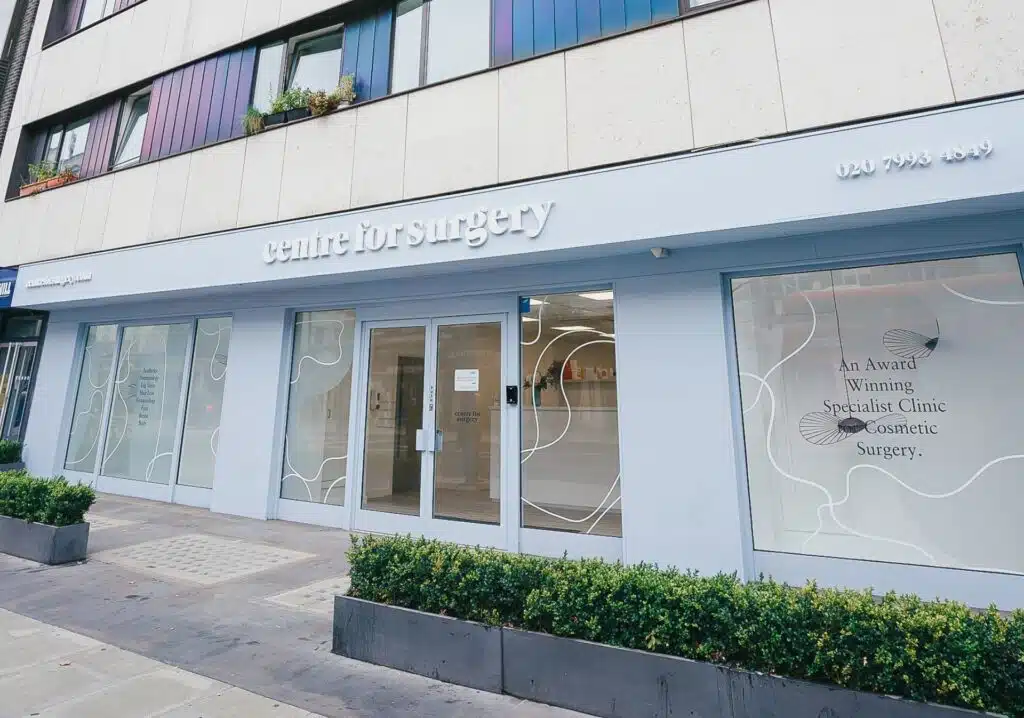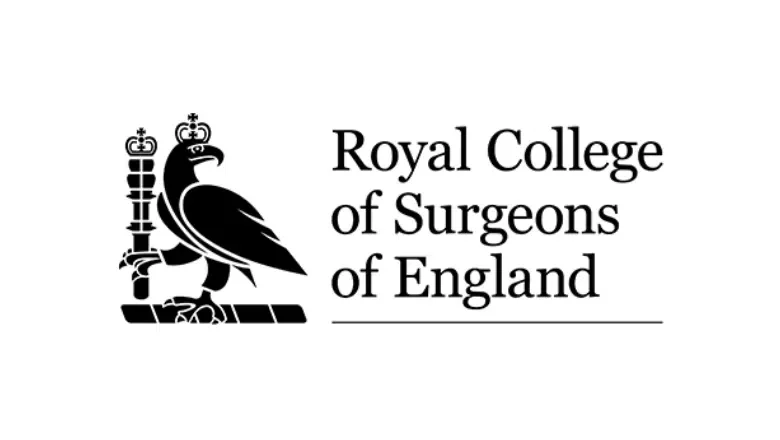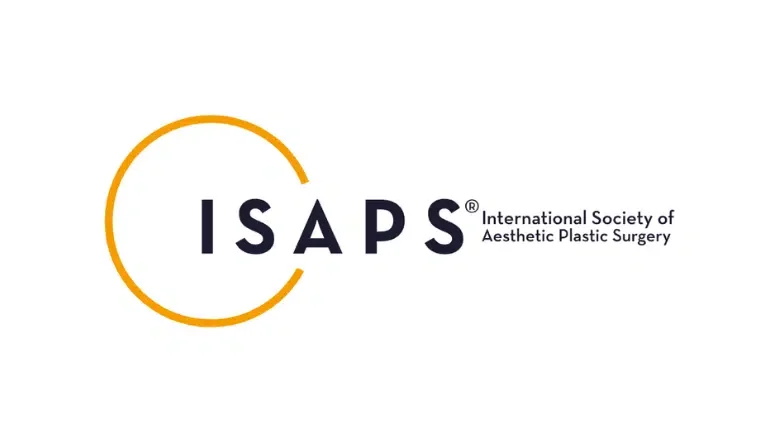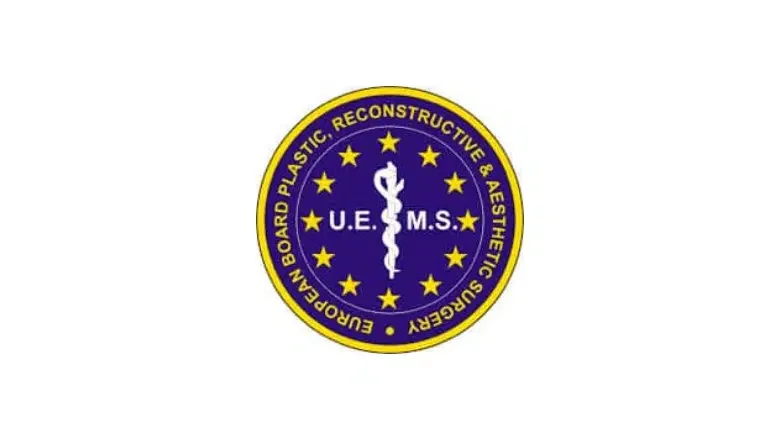A number of women feel that having larger breasts can be a hindrance. There are those who do not appreciate how their breasts look and others who deal with ongoing physical difficulties, including persistent backaches and unwanted strain on the shoulders. Some people struggle with finding comfortable clothing that fits properly, while others experience discomfort during exercise and everyday movement. In these circumstances, a breast reduction may offer a welcome solution by reducing the weight and volume of the breasts, potentially alleviating both aesthetic and physical concerns. The choice between a traditional surgical breast reduction and a liposuction breast reduction is worth exploring in detail, as both approaches have advantages and limitations. Understanding how each procedure works, how they differ in recovery, and what type of outcome you can expect is the key to making a well-informed decision. This guide will look at the differences between liposuction breast reduction and traditional methods, examine how each procedure is performed, discuss potential risks and benefits, and explain what the experience of recovery might entail. It will also explore whether these procedures can be combined with others and how to know which approach suits you.
RELATED: Scarless Breast Reduction – Is Breast Liposuction Effective?
What is Breast Reduction and why do Women Choose to Have it?
Breast reduction is a procedure designed to reduce both the size and weight of the breasts. It typically provides relief for women who are dissatisfied with their breast proportions or those who experience discomfort caused by the excess mass of the chest area. Having large breasts can make everyday life more challenging, especially if pain is involved. Although some women only feel mild pressure or back strain, others develop persistent pain that might radiate down the spine or to the shoulders, forcing them to limit exercise and certain daily activities. Clothing choices can also become restricted if standard sizes do not accommodate larger busts, making the process of shopping feel frustrating and time-consuming.
RELATED: Breast Reduction Surgery Before & After Photos
Beyond the physical concerns, psychological and emotional effects can arise as well. Some women feel self-conscious about the size of their breasts, which may affect their confidence and lead them to alter their posture or the way they dress. Others may feel that their breasts draw unwanted attention, and this can sometimes cause anxiety in social or professional situations. The decision to proceed with breast reduction, whether by traditional surgery or liposuction, usually emerges from the desire to have smaller, more proportionate breasts that bring comfort and confidence in day-to-day life.
How Liposuction Breast Reduction Differs from Traditional Methods
Two main techniques exist for breast reduction: the traditional surgical method and the liposuction-based approach. Traditional surgery involves making incisions, removing excess glandular tissue, fat, and skin, and often lifting and repositioning the nipples while maintaining their vital connection to nerves and blood vessels. Liposuction breast reduction, on the other hand, focuses on removing excess fat through small incisions, without necessarily removing large amounts of skin or repositioning the nipples. The choice between the two usually depends on the composition of the breasts and the specific goals of the patient.
A woman whose breasts consist primarily of fatty tissue may benefit greatly from a liposuction approach, as excess fat can be efficiently removed, resulting in smaller breasts and minimal scarring. However, if the breasts are composed of more glandular tissue, a full surgical breast reduction might be the most appropriate option, because removing extra skin and reshaping the breast mound could be crucial. For many individuals, a consultation with a qualified surgeon is the best way to assess personal anatomy, discuss aesthetic desires, and identify whether liposuction breast reduction or a traditional breast reduction is more suitable.
What Liposuction Breast Reduction Involves
Liposuction breast reduction involves the use of a specialised form of liposuction that aims to remove fatty tissue without damaging surrounding areas. At Centre for Surgery, the preferred method is PAL (Power-Assisted Liposuction). This particular technology involves the use of a device that vibrates gently to dislodge and emulsify fat cells, which can then be aspirated and removed through thin tubes. The process does not use heat, unlike certain laser or ultrasound-based liposuction techniques, meaning there is often less risk of burns or thermal damage to delicate tissues.
During liposuction breast reduction, small incisions are created in discreet areas of the breast so that cannulas (the thin tubes) can be inserted. These incisions are much smaller than those used in a full breast reduction surgery. The surgeon then removes excess fat cells and carefully shapes the remaining tissue to create a more desirable breast contour. Once the procedure is complete, the incisions are closed, leaving behind small scars that, in many cases, are barely noticeable over time.
The PAL Liposuction Technique and Its Benefits
PAL liposuction stands apart from older liposuction methods because it doesn’t rely on intense heat or lasers. Instead, it uses a motorised handle that produces rapid, gentle vibrations to disrupt fat cells. By breaking down the cells more effectively, it allows for a smoother removal process. This can lead to less swelling and bruising, because the surrounding tissues are typically left unharmed. It also enables a more precise approach to contouring, which is important when reshaping something as visible and delicate as the breast.
A further advantage of PAL liposuction is that it can be associated with a quicker recovery. As there is reduced trauma to the area, many patients experience less post-operative pain, and the overall downtime may be shorter compared to other forms of liposuction. Some patients return to their usual activities within a week, although it is crucial to follow any post-operative guidance provided by the surgical team to promote optimal healing and results.
How Traditional Breast Reduction Surgery Works
Traditional breast reduction surgery differs fundamentally from liposuction because it not only removes excess fat but also excises glandular tissue and extra skin. This means that if you have sagging skin or enlarged glandular tissue, the surgical method might be more suitable. The procedure is also performed using TIVA (Total Intravenous Anaesthesia), which is an advanced form of sedation without the use of inhaled gases, often leading to a gentler experience and quicker recovery compared to older, more conventional forms of general anaesthesia.
In a typical surgical breast reduction, the surgeon creates incisions around the areola, typically extending downwards and sometimes following the breast crease, depending on the patient’s needs. Excess tissue and skin are removed to decrease size and volume, and the remaining tissue is reshaped. The nipple is carefully repositioned to maintain symmetry and ensure a natural breast appearance. Although this form of breast reduction can provide substantial changes in size, it does leave longer scars than liposuction alone. Many patients, however, find that these scars fade over time, becoming far less visible.
Recovery and Aftercare Following a Liposuction Breast Reduction
Recovery from a liposuction breast reduction typically involves a shorter period away from work and normal activities compared to a full surgical reduction. Most people can manage discomfort with oral painkillers, and swelling is often noticeably less severe, partly thanks to the gentle nature of PAL liposuction. Because this form of breast reduction relies on fewer incisions, any swelling or bruising may be localised around the small entry points where the cannulas were inserted.
Those who choose liposuction breast reduction can often return to many daily tasks within a week, though more strenuous activities, including intense workouts or heavy lifting, should be avoided for up to four weeks. This careful approach to healing allows the tissues to settle properly, minimises the risk of complications, and helps in achieving an aesthetically pleasing outcome. It is wise to wear any recommended support garments, such as a surgical bra, during the recovery phase. Such garments can provide gentle pressure to the breast area, potentially reducing swelling and contributing to a smoother contour.
Recovery and Aftercare Following a Traditional Breast Reduction
After a traditional breast reduction, there may be a bit more downtime. As the procedure is more extensive, involving the excision of excess tissue and the reshaping of the breast, patients typically experience a longer healing process and more noticeable discomfort in the immediate post-operative period. Pain can usually be managed with prescribed medication, but individuals should be aware that swelling, bruising, and a feeling of tightness can linger for a few weeks.
RELATED: Recovery after Breast Reduction Surgery – Top Tips
The presence of longer incisions means that caring for surgical wounds is a crucial element of the recovery phase. Your surgeon may provide guidelines on how to clean the incisions and when to return for a check-up. They will also advise on wearing a supportive surgical bra to help keep the area stable and support the new breast shape. Some women find that they need two weeks or more before going back to work, particularly if their job is physically demanding. Engaging in any vigorous exercise or activities that strain the chest muscles must be postponed until you have your surgeon’s approval.
Possible Risks and Complications to Consider
Breast reduction, whether by liposuction or surgery, is generally safe when performed by a skilled and experienced surgeon. However, no medical procedure is completely without risk. Those who choose liposuction breast reduction may still experience minor complications such as bruising, swelling, infection at the incision sites, or asymmetry in the final result. In most cases, these are temporary or can be corrected if they occur.
Traditional surgical breast reduction carries a slightly higher risk of complications because it is more invasive. Wound healing issues may arise, and there can sometimes be an impact on nipple sensation, particularly because the nipple is repositioned to achieve a lifted outcome. Some patients may encounter longer-term scarring, although these scars usually fade in time. Good communication with your surgeon and adherence to post-operative instructions can go a long way towards minimising complications and achieving the best possible result.
Combining Breast Reduction with Other Procedures
Many women choose to combine breast reduction with a breast lift, especially if they seek a firmer, more youthful-looking shape. The lift can address any sagging that may not be corrected by simply removing excess tissue. Liposuction is occasionally added to a traditional breast reduction, particularly if there is localised fat around the sides of the breasts or under the arms. This approach can give a more refined contour, although it may extend recovery slightly.
The decision to combine multiple procedures should be made in discussion with your surgeon, who can advise on the advantages, disadvantages, and overall impact on recovery. If you have multiple aesthetic or functional concerns, such as an overly large bust combined with sagging skin, combining procedures can often be cost-effective and less time-consuming than scheduling separate surgeries, though it may be more extensive. A thorough consultation will help clarify whether a single comprehensive surgery is right for you or if a staged approach might be safer and more effective.
Who is a Good Candidate for Liposuction Breast Reduction?
Liposuction breast reduction works best when the breasts predominantly contain fatty tissue and do not display significant sagging or an excess of glandular tissue. Younger women with good skin elasticity and those who do not require a dramatic lift often find liposuction alone to be very effective. It can also be a good option for those seeking a subtler reduction rather than a drastic one.
If you have moderate to severe sagging or if the main source of your breast size is glandular tissue, liposuction breast reduction may not deliver the result you want. In such cases, traditional surgery is more likely to offer a thorough transformation, addressing excess skin, removing glandular tissue, and re-sculpting the breast to a more balanced shape. The best course of action is to discuss these points with your surgeon and undergo a thorough examination before deciding on a course of treatment.
Choosing Between Liposuction Breast Reduction and Traditional Surgery
Deciding which breast reduction procedure suits you requires consideration of several factors, including the composition of your breasts, the desired degree of reduction, any concerns about scarring, and your tolerance for recovery downtime. Liposuction breast reduction involves smaller incisions, shorter scars, and potentially a quicker healing process, making it appealing to those concerned about a lengthy recovery or permanent marks on the skin. It can also help preserve nipple sensation, since the nipples are not moved.
RELATED: Breast Reduction FAQs – Q&A about Breast Reduction Surgery
Traditional breast reduction, while more invasive, offers a more comprehensive reshaping, particularly for those dealing with large amounts of glandular tissue and sagging skin. The inclusion of incisions that remove excess skin and reposition the nipple can result in a significant aesthetic transformation, but it means coping with more noticeable scarring and a longer recovery. A one-on-one consultation is the most effective way to address any personal factors that might tilt your decision in one direction or the other.
Ensuring a Smooth Recovery
Whether you opt for liposuction breast reduction or the surgical route, following the guidance of your medical team is central to a smooth post-operative experience. Rest is essential in the first few days to minimise discomfort and allow the body to begin healing. This period is also an excellent time to develop healthy habits such as staying properly hydrated, maintaining a balanced diet that supports tissue repair, and avoiding any intense physical activities until cleared by your surgeon.
Gradually reintroducing everyday tasks is often recommended, but lifting heavy objects or engaging in strenuous exercise must be delayed until the breasts have recovered enough. Scar care can be another aspect of your recovery, as even small incisions can benefit from proper wound management and the application of scar creams or gels once the skin is fully healed. Many people find that ongoing follow-up appointments provide peace of mind, allowing the surgeon to track the healing process, address any concerns, and optimise the final outcome.
What to Expect from Your Results
A breast reduction can reshape your body image in ways that extend beyond simple aesthetics. Many patients report relief from back and shoulder discomfort, improved ability to exercise, and a more confident feeling in social situations. Clothes may fit better, and movement can feel less restricted. Liposuction breast reduction, by focusing on removing fatty tissue, can create a more balanced silhouette, particularly in cases where the breasts were mainly composed of fat. Traditional surgery can produce a more comprehensive lift and reshaping, which is beneficial for those whose large breasts stem from a mixture of excess skin, glandular tissue, and fat.
Individual results do vary, so it is important to have realistic expectations about how breast reduction will look and feel. Some women may achieve a modest decrease in cup size, while others might undergo a more noticeable change. Adhering to a healthy lifestyle, including a stable body weight, can help preserve the benefits of the procedure, since significant weight fluctuations can influence the size and shape of your breasts.
Choosing the Right Breast Reduction Approach
Embarking on a breast reduction journey can involve a blend of excitement and apprehension. For many women, the choice between a liposuction breast reduction and a traditional surgical approach comes down to the structure of their breasts, their personal goals, and the level of correction they need. Liposuction breast reduction may be appealing if you prefer smaller scars and quicker recovery, particularly if your concerns are limited to excess fat rather than a significant amount of sagging or glandular tissue. By contrast, a traditional breast reduction is likely to provide more dramatic changes if you require a lift or have a greater degree of tissue and skin that need removing.
RELATED: How to Fix Saggy Breasts
Because each individual’s anatomy and aesthetic desires differ, a comprehensive consultation with a qualified surgeon is indispensable. Your surgeon will assess your breasts, discuss what you hope to achieve, and guide you towards the procedure that aligns best with your lifestyle, anatomy, and overall health.
About Centre for Surgery
Centre for Surgery is a specialist plastic surgery clinic located in the heart of London. Recognised for performing a wide range of surgical and non-surgical treatments, the clinic has built its reputation on clinical expertise, personalised patient care, and a commitment to utilising advanced techniques. The clinical teams here place strong emphasis on safety, education, and patient-centred treatment, guiding individuals towards choices that best serve their well-being and personal objectives.
One of the unique aspects of Centre for Surgery is its dedication to practices that minimise downtime while enhancing comfort. The surgeons employ cutting-edge technology and carefully tailored anaesthesia protocols, such as TIVA, to create safer and smoother operative experiences. By offering various breast reduction options, including the PAL liposuction technique, the team at Centre for Surgery empowers patients to explore different paths towards a more comfortable and confident silhouette. If you are contemplating either a liposuction breast reduction or a traditional surgical procedure, you have the option to schedule a consultation to receive expert guidance.
Patients can expect thorough consultations, attentive aftercare, and transparent communication about any questions or uncertainties that may arise. Centre for Surgery combines a patient-first philosophy with advanced clinical knowledge, enabling you to step into your breast reduction journey feeling supported, informed, and reassured that you are on the right path. Through meticulous care, evidence-based practices, and a passion for patient satisfaction, Centre for Surgery stands ready to help you achieve a shape and size that aligns comfortably and confidently with your lifestyle.










